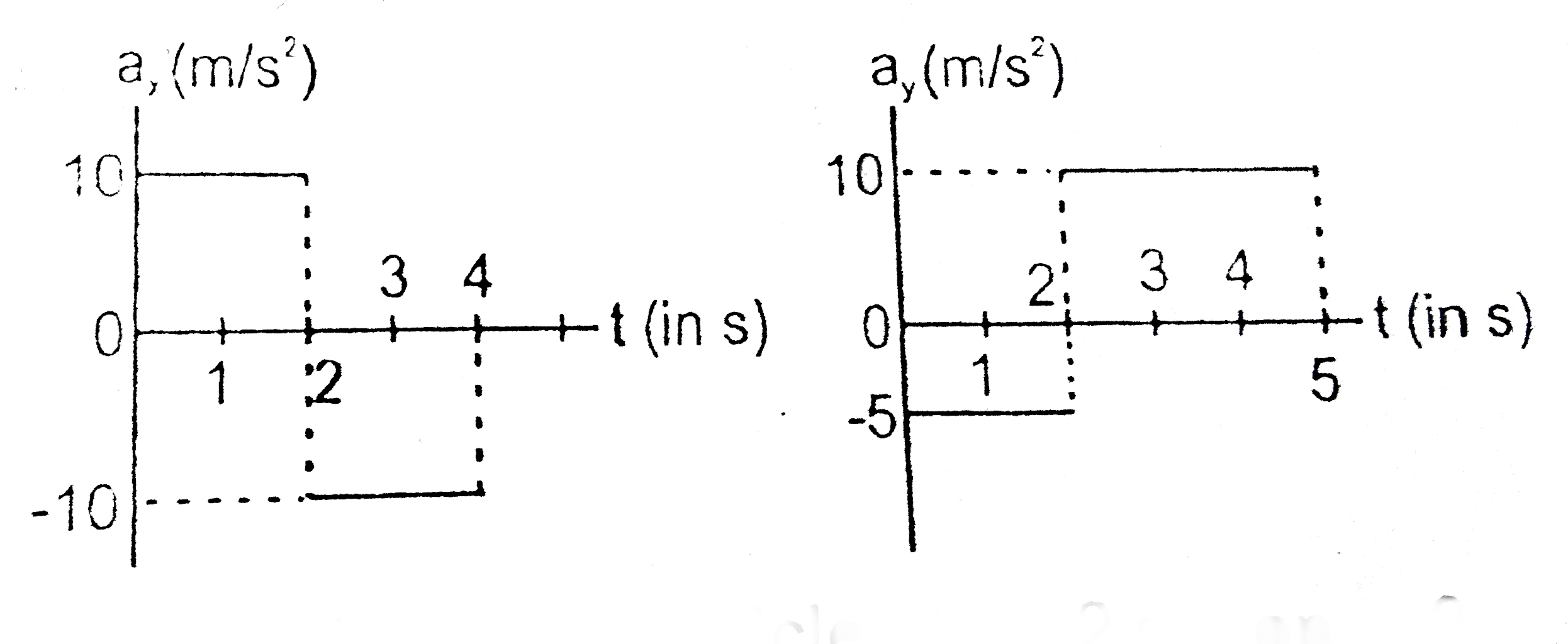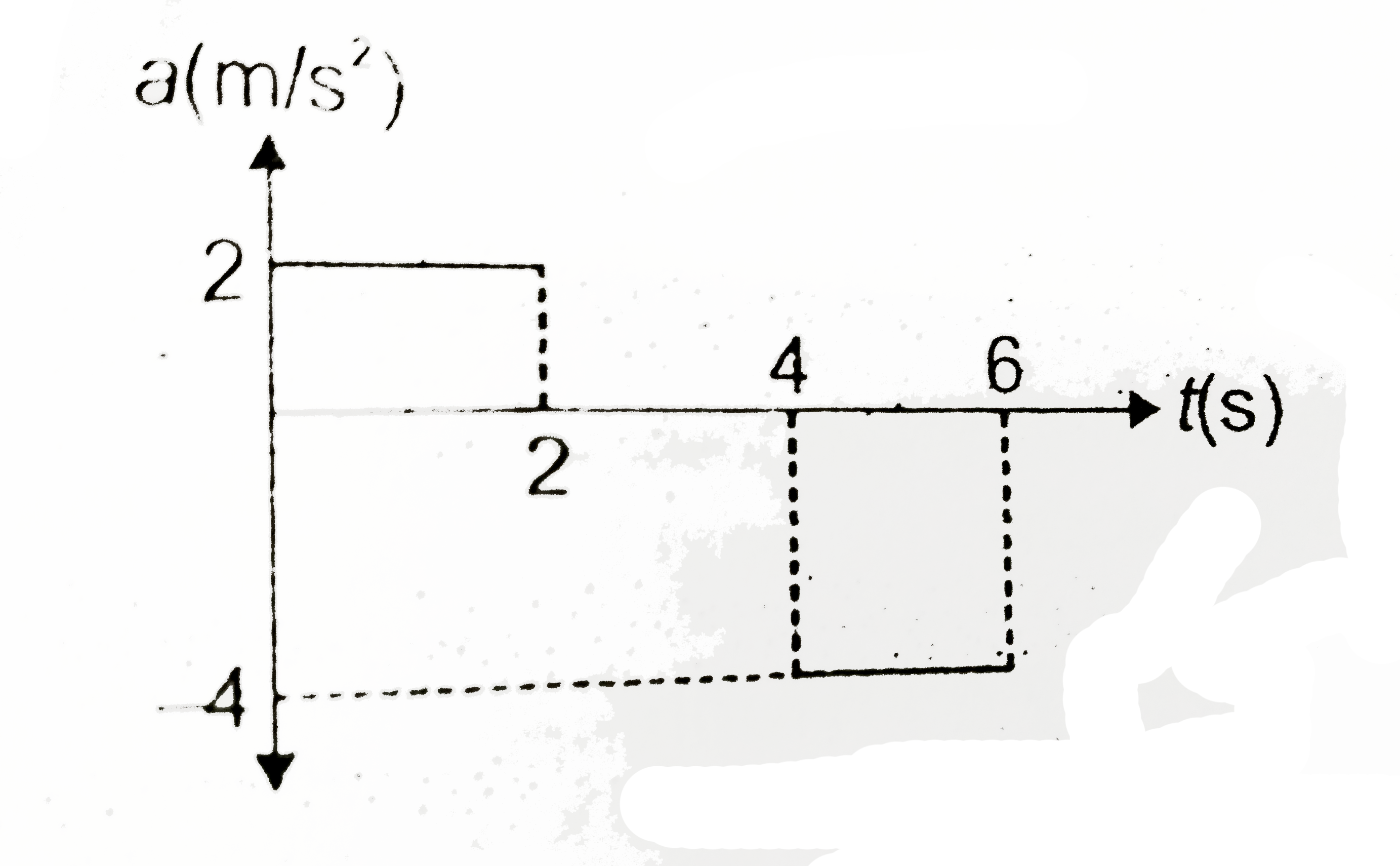A particle which is initially at rest at the origin, is subjection to an acceleration with and components as shown. After time , the particle has no acceleration.

When is the particle at its farthest distance from the axis ?
A. 3 sec.
B. 2 sec.
C. 4 sec.
D. 1 sec.
The correct Answer is:C
From
Hence , average velcoity of particle between to is
After
Hence, at . the particle is at its farthest distance from the axis.
The particle is at farthest distance from axis at . Hence the available correct choice is .
Topper's Solved these Questions
- BOOK - RESONANCE ENGLISHCHAPTER - DAILY PRACTICE PROBLEMSEXERCISE - dpp 707videos
DAILY PRACTICE PROBLEMS
- BOOK - RESONANCE ENGLISHCHAPTER - DAILY PRACTICE PROBLEMSEXERCISE - dpp 718videos
DAILY PRACTICE PROBLEMS
- BOOK - RESONANCE ENGLISHCHAPTER - DAILY PRACTICE PROBLEMSEXERCISE - dpp 695videos
DAILY PRACTICE PROBLEMS
- BOOK - RESONANCE ENGLISHCHAPTER - CURRENT ELECTRICITYEXERCISE - Exercise53videos
CURRENT ELECTRICITY
- BOOK - RESONANCE ENGLISHCHAPTER - ELASTICITY AND VISCOCITYEXERCISE - Advanced Level Problems9videos
ELASTICITY AND VISCOCITY
Similar Questions
A particle which is initially at rest at the origin, is subjection to an acceleration with x− and y− components as shown. After time t=5 , the particle has no acceleration.

What is the magnitude of velocity of the particle at t=2 seconds ?View SolutionA particle which is initially at rest at the origin, is subjection to an acceleration with x- and y- components as shown. After time t=5 , the particle has no acceleration.
What is the magnitude of average velocity of the particle between t=0 and t=4 seconds ?
A. 52√13m/s
B. 52√17m/s
C. 30m/s
D. None of theseView SolutionA wheel which is initially at rest is subjected to a constant angular acceleration about its axis. It rotates through an angle of 15∘ in time t sec. Then how much it rotates in the next 2t sec
View SolutionA particle is moving along the x-axis whose acceleration is given by a=3x−4, where x is the location of the particle. At t = 0, the particle is at rest at x=4/3m. The distance travelled by the particles in 5 s is
View SolutionA particle is projected from the origin in X-Y plane. Acceleration of particle in Y direction is a. If equation of path of the particle is y=ax−bx2, then find initial velocity of the particle.
View SolutionA particle starts moving from rest with uniform acceleration. It travels a distance x in the first 2 sec and a distance y in the next 2 sec. Then
View SolutionA particle starts from rest. Its acceleration is varying with time as shown in the figure. When the particle comes to rest, its distance from its starting point is
 View Solution
View SolutionA particle experiences a constant acceleration for 20 sec after starting from rest. If it travels distance S1 in the first 10 sec and a distance S2 in the next 10 sec, Then
View SolutionA particle experiences a constant acceleration for 20 sec after starting from rest. If it travels distance S1 in the first 10 sec and a distance S2 in the next 10 sec, Then
View SolutionA particle moves along the x-axis obeying the equation x=t(t−1)(t−2), where x is in meter and t is in second
a. Find the initial velocity of the particle.
b. Find the initial acceleration of the particle.
c. Find the time when the displacement of the particle is zero.
d. Find the displacement when the velocity of the particle is zero.
e. Find the acceleration of the particle when its velocity is zero.View Solution

